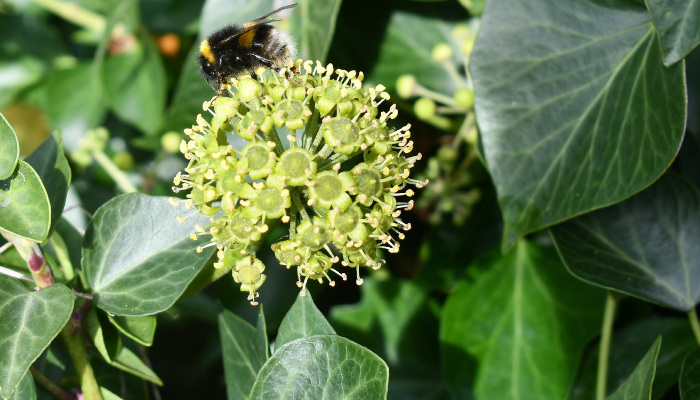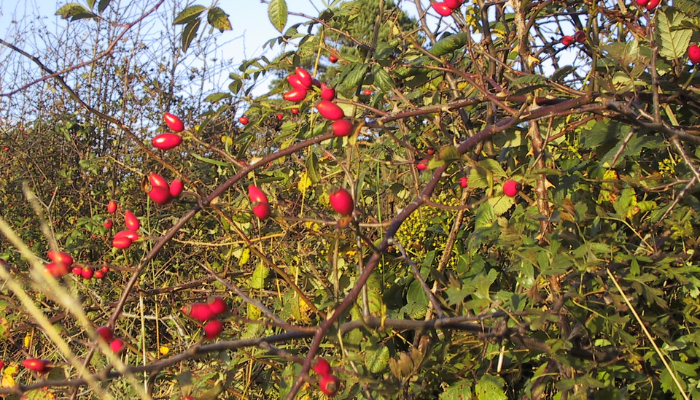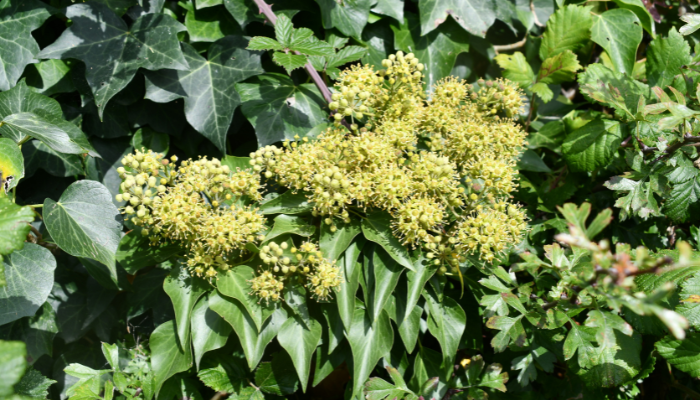04 December 2022
Growing Wild – Rose Hips and Flowering Ivy

Catherine Keena, Teagasc Countryside Management Specialist takes a closer look at some of our native Irish biodiversity to look out for in the countryside.
Rose Hips

Look out for bright shiny scarlet red rose hips on the briars of the dog rose. They which contain seeds within protective irritating hairs giving them the name ‘itchy backs’ by children putting the hairy seeds down each other’s back. Some birds are able to extract the seeds. Rose hips are an important source of food for birds and mammals such as field mice who eat the flesh of the hips. Rich in Vitamin C, they are used in rose hip cordial. Does anyone remember collecting plastic bags of rose hips for their national school as part of a national collection to be sent to Africa?
Flowering Ivy

Look out for flowering ivy, sure to be covered in bees, wasps, flies, butterflies and moths, if and when the sun is shining. Some are attracted by the putrid smell of fairly inconspicuous lime-yellow flowers on the crown of woody stems amid oval untoothed leaves – characteristic of the flowering stage of ivy. Five pointed green petals reflex backwards with the dome in the centre oozing nectar, at a time of year in November and December when nectar is scarce. Ivy is a foodplant of the holly blue butterfly, whose eggs are laid on the flowers. Love or hate it, ivy is part of our native Irish biodiversity.
See previous Growing Wild articles below:
- Growing Wild – Yarrow and Herb Robert
- Growing Wild – Elderberries and Blackberries
- Growing Wild – Haws and Spindle
- Growing wild – Guelder Rose and Sloes
- Growing wild – Purple loosestrife and Lord and Ladies
- Growing Wild – willowherb and water mint
- Growing Wild – dandelion and greater stitchwort
- Growing Wild – willow, primrose and lady’s smock
- Growing Wild – whitethorn and cow parsley
- Growing Wild – bluebells and guelder rose
- Growing wild – Honeysuckle and Foxglove
- Growing Wild – Elder and Ragged Robin
- Growing wild – dog rose and meadowsweet
- Growing wild – Privet and Lady’s Bedstraw
- Growing Wild – Bird’s foot trefoil and Knapweed
Keep an eye on Teagasc Daily for another Growing Wild later in the month. Learn more from Teagasc about Biodiversity & Countryside
